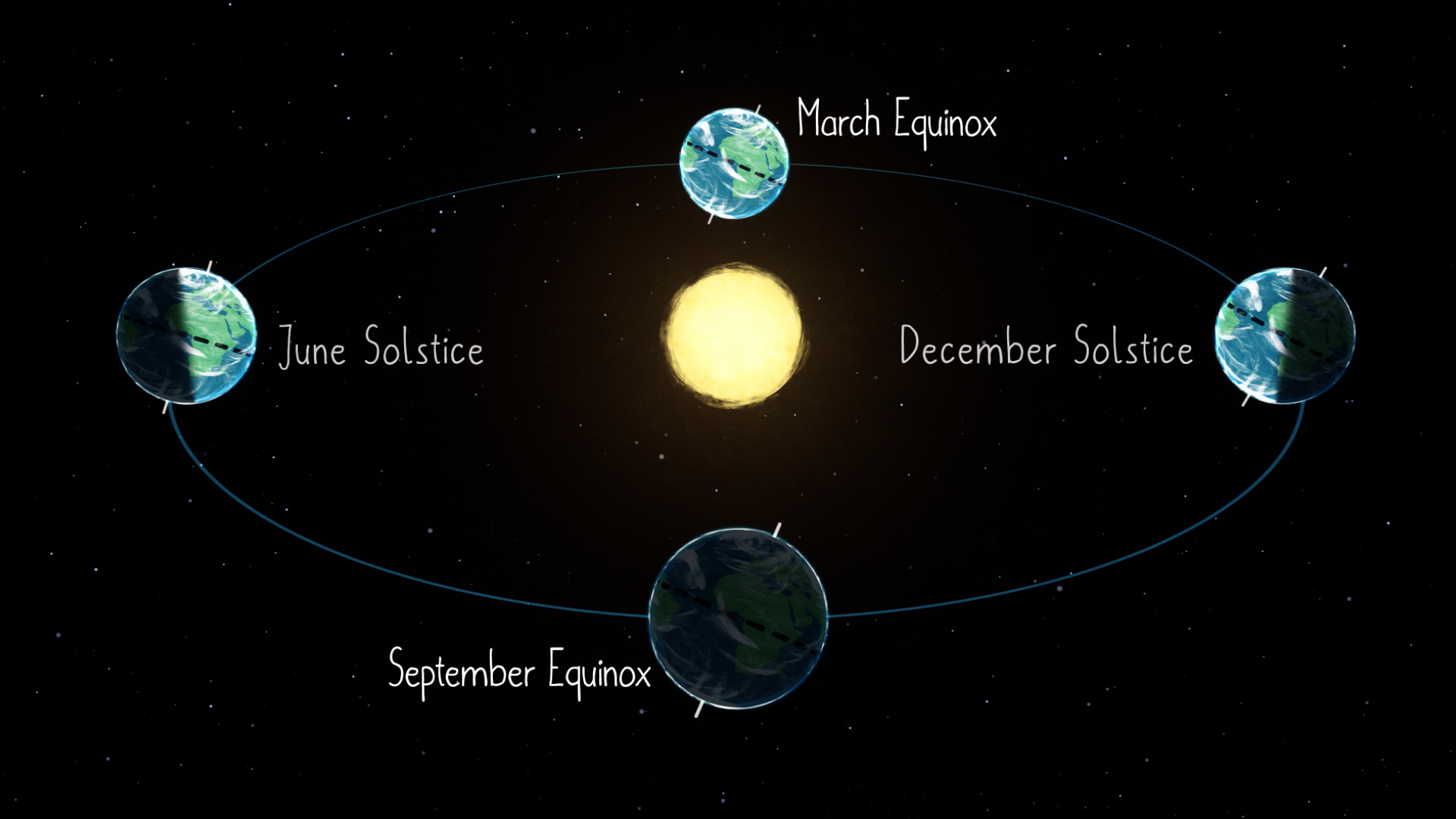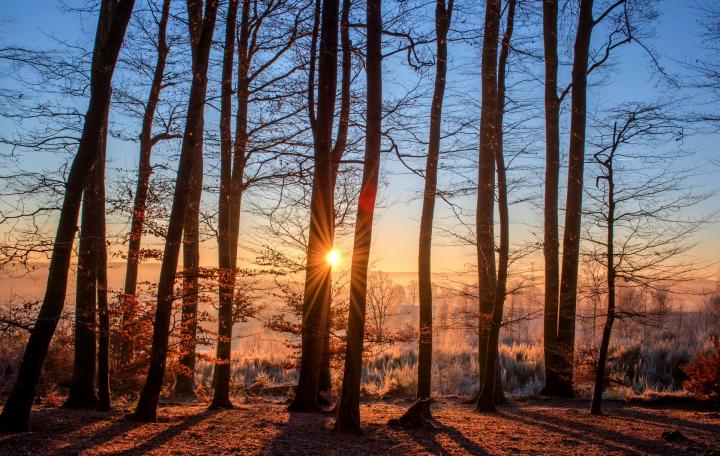The winter solstice marks the official beginning of astronomical winter (as opposed to meteorological winter, which starts about three weeks prior to the solstice).
The winter solstice occurs once a year in each hemisphere: once in the Northern Hemisphere (in December) and once in the Southern Hemisphere (in June). It marks the start of each hemisphere’s winter season. When one hemisphere is experiencing their winter solstice, the other is simultaneously experiencing their summer solstice!
This is all thanks to Earth’s tilted axis, which makes it so that one half of Earth is pointed away from the Sun and the other half is pointed towards it at the time of the solstice.
We often think of the winter solstice as an event that spans an entire calendar day, but the solstice actually lasts only a moment. Specifically, it’s the exact moment when a hemisphere is tilted as far away from the Sun as it can be. This is shown in the diagram below.

The winter solstice holds significance across a variety of cultures, as it signals the changing of the seasons. Some ancient peoples even marked the solstice using huge stone structures, like Newgrange in Ireland. In some cultures, the solstice traditionally marked the midway point of the season rather than the start of it, which explains why holidays such as Midsummer Day are celebrated around the first day of summer.
What Happens on the Winter Solstice?
On the day of the winter solstice, we are tilted as far away from the Sun as possible, which means that the Sun’s path across the sky is as low in the sky as it can be. Think about the daily path of the Sun: It rises in the east and sets in the west, arcing across the sky overhead. During the summer, the Sun arcs high in the sky, but during the winter, it arcs lower, closer to the horizon.
How can we observe the effects of solstice ourselves? On the day of the solstice, stand outside at noon and look at your shadow. It’s the longest shadow that you’ll cast all year! Do this again on the day of the summer solstice and you’ll see almost no shadow.
The Sun’s Changing Path
Another way to think of this is that on the day of the solstice, the Sun’s path reaches its most southerly point in the sky. For those of us in the Northern Hemisphere, this means that the Sun’s path is as low in the sky as it can get—even at “high noon.” In the Southern Hemisphere, it’s the opposite: The Sun’s path will be high in the sky on the winter solstice—directly overhead at noon at the latitude called the Tropic of Capricorn, which is an imaginary line that circles the Earth, running through parts of South America, southern Africa, and Australia.

The word solstice comes from Latin sol “sun” and sistere “to stand still.” So, loosely translated, it means “sun stand still.” Why? For a few days before and after the solstice, the Sun’s path across the sky appears to freeze. The change in its noontime elevation is so slight that the Sun’s path seems to stay the same, or stand still.
The day after the winter solstice, the Sun’s path begins to advance northward again, eventually reaching its most northerly point on the day of the summer solstice.
Then, as summer advances toward winter, the points on the horizon where the Sun rises and sets advance southward each day; the high point in the Sun’s daily path across the sky, which occurs at local noon, also moves southward each day. It’s a never-ending cycle!
TYT Newsroom



